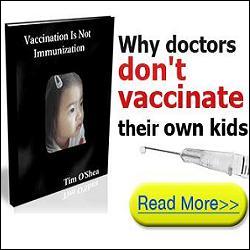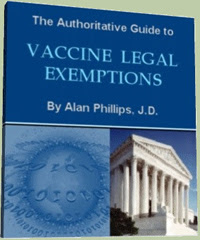 |
| image source |
Rima Laibow, MD Medical Director
Natural Solutions Foundation
Almost nothing arouses more outrage than a bruised, brain damaged baby apparently shaken to death by an enraged parent of babysitter. Shaken Baby Syndrome (SBS), which will be blamed for an anticipated 12,500 children in the US this year[1], will send parents and other caregivers to jail, sometimes for life.
Up to half of deaths related to child abuse will be blamed on SBD.[2], [3] Parents and caregivers will be rushed to judgment in emotional trials where judges frequently refuse to allow expert testimony for the defense, while the attorneys of the accused prevent them from taking the stand in their own defense and dismiss the expert witnesses and data the accused wish to present to defend themselves with.
The presumption is clear: “You killed this baby and there is nothing you can possibly say in your own defense.”
But what if these horrifying deaths are, in fact, responses to toxic trauma stimulating a predictable, and therefore preventable, cascade of events leading to an auto immune response to the increasingly common intervention of vaccination?
To explore the cause of so-called SBS, the Natural Solutions Foundation, of which I am the Medical Director, held a powerful webinar recently and created a companion 50+ page heavily referenced ebook and Resource Guide for Parents and Professionals on this vitally important topic.
We found that the research shows a very different picture (and has done so for a long time!): vaccines, not parents, are responsible for the vast majority of so-called SBS and that the blame is being shifted to parents to help hide the reality about vaccines. The webinar can be accessed by visiting http://drrimatruthreports.com/sudden-death-and-murder-not-just-for-babies/ or http://TinyURL.com/SBSHoax. I highly recommend that parents, nurses, pediatricians, police officers, lawyers and others concerned with justice and infant well-being visit those links and access the webinar.
SBS is characterized by the triad of
- Encephalopathy
- Thin subdural hemorrhages
- Retinal hemorrhages.
The baby may lack any external sign of trauma or may have significant bruising with unusual fractures, some old, some new.
 SBS is often fatal or, if not lethal, can cause severe brain damage, resulting in lifelong disability. Estimated mortality among infants with SBS range from 15% to 38% (median is 20%–25%). Nonfatal consequences of SBS include varying degrees of visual impairment (including blindness ), motor impairment (e.g., cerebral palsy) and cognitive impairments.
SBS is often fatal or, if not lethal, can cause severe brain damage, resulting in lifelong disability. Estimated mortality among infants with SBS range from 15% to 38% (median is 20%–25%). Nonfatal consequences of SBS include varying degrees of visual impairment (including blindness ), motor impairment (e.g., cerebral palsy) and cognitive impairments.
When an outraged health professional or law enforcement officer sees the swollen, severely injured or, more frequently, dead baby, their first response is to look for someone to blame: the baby’s mother, father, baby sitter, grandmother, etc.
Health professionals thinking rationally understand that a baby shaken so violently as to damage or kill it would have to show skeletal changes based on the displacement of bony and soft tissue elements in the baby’s spine, skull, etc. These changes, however, are virtually always absent. In fact, careful accelerometer studies show conclusively that it is not possible to shake a baby to injury without massive skeletal changes which are absent in metabolic SBS.[4]
What is nearly always present, although rarely correctly diagnosed, however, is Tissue Scurvy, a condition nearly always missed by health care practitioners unfamiliar with it. As hematologist Michael D. Innis, MD, points out in his January, 2013 article, [5] tissue scurvy is frequently misdiagnosed as SBS with disastrous legal and emotional consequences as the grieving family is further impacted by accusations of murder and subsequent unjust incarceration.
“Tissue Scurvy” is an autoimmune disorder in which there is an abundance of Vitamin C in the body (unlike “Seafarer Scurvy” where there is a systemic Vitamin C deficit) but the Vitamin C is unable to enter the tissue cells to perform its functions of maintaining the integrity of the blood vessels and skeletal tissue. Without cellular Vitamin C, various critical enzymatic actions cannot occur.[6]
The result of this intracellular lack of Vitamin C is the development of fractures, hemorrhages and other lesions of Tissue Scurvy including the so-called SBS triad features which are solely a result of the auto immune response to a toxic trauma.[7]
The relationship of vaccines and autoimmune response, including Tissue Scurvy is well established. In fact, the most common cause of Tissue Scurvy In infants and children is the administration of vaccines, any vaccine. Symptoms are generally seen within 4 weeks of vaccine administration.[8]
Vaccination has been shown to initiate either immune suppression or auto immune attack, including diabetes types I and II and metabolic syndrome in children. Vaccines have been shown to cause autoimmune diseases including type 1 diabetes, [9], [10], [11], [12] chronic inflammatory disease and cerebral swelling (encephalopathy).[13]
Children are differentially vulnerable to this type of vaccine injury. Babies with liver disease, pre-existing auto immune disorders and other illnesses are especially likely to develop negative reactions to vaccines. Furthermore, vulnerability to this type of vaccine complication is genetic, with a strong ethnic and racial distribution profile: “The propensity to develop a particular response relates to race. Japanese children produce large amounts of cortisol following immunization and have lower risk of type 1 diabetes but higher risk of type 2 diabetes than White children. Analysis using Austin Bradford-Hill criteria for causation support[s] a causal relation between immunization and metabolic syndrome.”[14]
The SBS signs are the end results of a cascade of events triggered by the auto immune destruction of the Beta cells of the pancreas resulting in reduced or absent insulin which not only makes the transport of glucose into the cells possible, but is also essential for the transport of Vitamin C into the cells.[15]
 Under normal circumstances, insulin binds to its receptor on the cell surface, initiating a chain of events leading to the insertion of a transmembrane glucose transporter called GLUT 4 in the plasma membrane. This transporter facilitates the transport of glucose and other nutrients, including Vitamin C, into the cell. When this process fails because of the lack of Insulin, Vitamin C cannot enter the cell leading to “Tissue Scurvy.”
Under normal circumstances, insulin binds to its receptor on the cell surface, initiating a chain of events leading to the insertion of a transmembrane glucose transporter called GLUT 4 in the plasma membrane. This transporter facilitates the transport of glucose and other nutrients, including Vitamin C, into the cell. When this process fails because of the lack of Insulin, Vitamin C cannot enter the cell leading to “Tissue Scurvy.”
Although the impact of low intracellular Vitamin C is wide spread, the impact on the cells of the liver is causative in the so-called SBS triad: leads to under-carboxylation of the coagulation factors, especially Vitamin K[16], and osteocalcin, resulting in the observed bruises, hemorrhages and fractures of the incorrectly named “Shaken Baby Syndrome”.[17],
In those cases in which laboratory tests are carried out the findings are consistent with diabetes mellitus and tissue scurvy: glucose and ketones are high and both coagulation and liver function tests are invariably abnormal.[18], [19]
Dr. Michael Innis, a leading expert in the relationship of tissue scurvy to so-called SBS writes Nowhere in the enormous amount of literature on the subject of the Shaken Baby Syndrome have the authors explained how shaking an infant can raise the level of the blood sugar or cause glucose to appear in the urine.[20]
Vaccines are an uninsurable risk for the vaccine manufacturers but they carry considerable risk for the recipients.
Shaken Baby Syndrome is one of those risks.
Rima E. Laibow, MD, who is licensed to practice medicine in 3 states, has practiced drug free medicine and psychiatry for nearly 45 years. She is the Medical Director of the Natural Solutions Foundation, www.DrRimaTruthReports.com, the world’s largest Health Freedom organization. Her email is [email protected].
Notes:
[1] http://www.hsmanatee.com/programs_sids.php
[2] “NINDS Shaken Baby Syndrome Information Page”.National Institute of Neurological Disorders and Stroke. 2007-02-14. Retrieved 2008-06-23.
[3] Shaken Baby Syndrome”. Journal of Forensic Nursing. http://www.medscape.com/viewarticle/515880
[4] Lloyd, J, et. al, Biomechanical Evaluation of Head Kinematics During Infant Shaking Versus Pediatric Activities of Daily Living, Ashdin Publishing Journal of Forensic Biomechanics, Vol. 2 (2011), Article ID F110601, doi:10.4303/jfb/F110601 http://www.ashdin.com/journals/JFB/F110601.pdf
[5] 2014; 3(1): 6-8 Published online January 30, 2014 (http://www.sciencepublishinggroup.com/j/cmr) doi: 10.11648/j.cmr.20140301.12
[6] Ibid
[7] Ibid
[8] Ibid
[9] Classen DC, Classen JB. The timing of pediatric immunization and the risk of insulin-dependent diabetes mellitus. Infect Dis Clin Pract 1997; 6: 449-54.
[10] Classen JB, Classen DC. Clustering of cases of IDDM occurring 2-4 years after vaccination is consistent with clustering after infections and progression to IDDM in autoantibody positive individuals. J Pediatr Endocrinol Metab 2003; 16: 495-508.
[11] Classen JB, Classen DC. Clustering of cases of insulin dependent diabetes [IDDM] occurring three years after Hemophilus influenza B [HiB] immunization support causal relationship between immunization and IDDM. Autoimmunity 2002; 35: 247-53.
[12] Classen JB, Classen DC. Vaccines and the risk of insulin dependent diabetes [IDDM], potential mechanism of action. Med Hypotheses 2001; 57: 532-38.
[13] Gherardi RK, Coquet M, Cherin P, et al. Macrophage myofasciitis lesions asses long-term persistence of vaccine-derived aluminum hydroxide in muscle. Brain 2001; 124: 1821-31.
[14] Classen, JB, Type 1 Diabetes Versus Type 2 Diabetes/Metabolic Syndrome, Opposite Extremes of an Immune Spectrum Disorder Induced by Vaccines, The Open Endocrinology Journal, 2008, 2, 9-15
[15] Cunningham JJ. The Glucose/Insulin System and Vitamin C:Implications in Insulin-dependent Diabetes Mellitus. J AmCollNutr; 1998:vol 17 p105-108
[16] Innis MD. Vitamin K Deficiency Disease. Jour of OrthomolMed 2008;vol 23; 15-20
[17] Cunningham JJ, Ellis SL, McVeigh KL, Levine RE, Jorge Calies Escandon Reduced mononuclear leucocyte ascorbic acid content in adults with insulin-dependent diabetes mellitus consuming adequate dietary vitamin C Metabolism 1981;vol 40;148-149.
[18] Clemetson CAB: Caffey Revisited: A Commentary on the Origin of “Shaken Baby Syndrome.”J Am PhysSurg, 2006; 11: 20-21.
[19] Caffey J: Multiple fractures in the long bones of infants suffering from chronic subdural hematoma. Am J Roentgenol, 1946; 56: 163–173.
[20] Innis, Loc. Cit.


Be the first to comment on "Rethinking Shaken Baby Syndrome: Abuse or Vaccine Injury?"